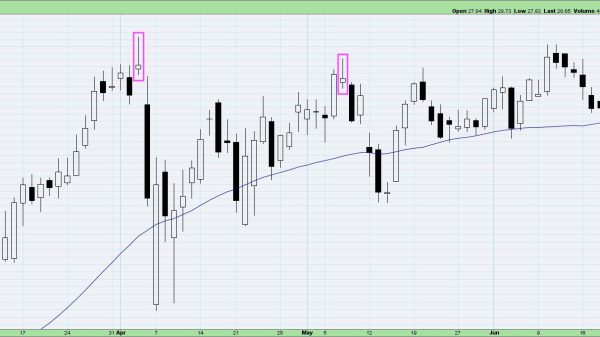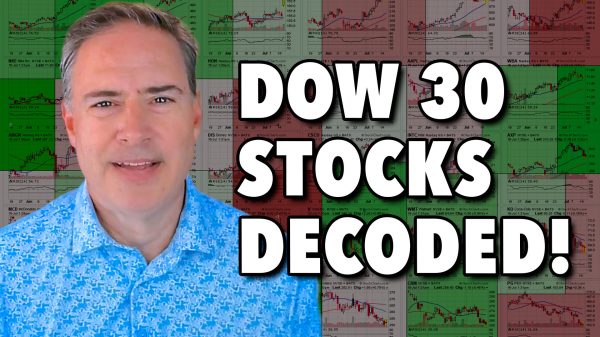What is supertrend strategy, and how to use it the best?
Key Takeaways: Supertrend Strategy
The Supertrend strategy uses an indicator that signals buy when the price moves above the line and sell when it moves below. This involves using two Supertrend indicators (10-3 and 20-2) to identify market trends on the Nifty50 index, providing clear signals for trades. Ensure higher timeframes show a bullish trend and the 1-minute timeframe aligns before entering a trade when the price touches the 1-minute Supertrend line. Enter long trades when both Supertrend indicators are green and short. The Supertrend indicator incorporates ATR, adjusts to market volatility, and works best in clear trending markets, often used with other technical indicators to enhance strategies.Have you ever considered what the “supertrend strategy” stands for and how to use it? Would you like to learn all about this particular strategy to improve your trading goals? If so, you’re at the right place!
According to our experts, supertrend strategy, as the name suggests, is one of the most powerful and useful strategies and approaches that assisted numerous traders on a global scale to increase their profits and success in the long run.
However, before we get to all the essentials of this strategy, let’s get the basics and learn from the beginning, shall we?
What does the supertrend strategy represent?
The supertrend strategy stands for a strategy that’s established based on its indicator. When the Supertrend moves from above to below the chart, it means to sell. Vice versa, when it moves from below to above the chart, it means to buy.
In simple terms, it is the indicator that long-term investors use for their investments based on following trends.
What is the double supertrend strategy?
The double supertrend strategy involves the utilization of the two distinct Supertrend indicators on the Nifty50 index to identify market trends and potential trade opportunities.
Specifically, this particular supertrend strategy uses a 10-3 Supertrend for slower movements and a 20-2 Supertrend for faster shifts. The key to this strategy is the synchronization of these Supertrend indicators.
Let’s get to know what three Supertrend indicators you need to synchronize, shall we?
Three indicators to synchronize
Higher Timeframe Confirmation: Pay attention that the Supertrend on a three minute or higher timeframe presents a specific bullish trend. One-Minute Confirmation: Remember that the one-minute Supertrend should also be bullish. Entry Point: You must enter it’s a trade once the price touches the 1-minute Supertrend line.
Long and short trades
Also, bear in mind the following long and short trades and when to enter them:
Long Trades: Enter when both the 10-3 and 20-2 Supertrend indicators are green. Short Trades: Enter when both indicators are red.In the situation above, in the case, these indicators present different colours, you need to abandon the trade and wait for alignment.
With the combination of these Supertrend indicators and using multi-timeframe analysis, this double supertrend strategy provides clear and reliable market signals for informed trading decisions.
However, to learn more about the Supertrend strategy, it’s useful to grasp all of its indicators. Let’s get with the basics of this indicator, shall we?
Get to know all about the Supertrend indicator strategy.
The Supertrend indicator stands for one of the most powerful technical analysis tools. This tool has been designed to identify all the trends. This identification trading tool mixes the ATR range with a multiplier to calculate its value.
Once done so, this value is then either added to or subtracted from the closing price of the asset. The main reason for doing so is to determine the position of the supertrend line.
It’s crucial to note that this indicator enables the famous “buy and sell” signals. It does so by the analysis of the stock’s price movements.
A sell signal occurs when the stock price goes below the supertrend line. On the other hand, a buy signal gets triggered once the particular stock price rises above the supertrend line.
Understanding this particular indicator as a true professional
To understand this indicator as a true professional, remember it’s extremely straightforward. The indicator calculates the line adjusting the closing price of an asset while using the ATR value (Average True Range).
It’s crucial to note that investors and traders worldwide utilize this powerful tool/indicator to compare its line with the price of an asset. As mentioned, a bullish trend is when the price gets above the line, while a bearish trend is when the line gets below.
In the first scenario, once the price is above we say – buy/hold situation, while the lower point is – sell/short. Line changes indicate trend reversals. They suggest either entry or exit points.
Adjusting sensitivity through a multiplier
Multiplier is where this Supertrend indicator adjusts its sensitivity. For instance, a much higher multiplier reduces false signals but may delay action, while a lower one provides quicker signals but increases false positives.
When traders or investors incorporate ATR, undoubtedly, it adapts to market volatility and works across different time frames. The rising market trend is when the price is above the line. It means it is one of the best times to action, i.e., buy.
On the other side, if the line is below, it indicates a falling market, which is the best time to sell.
Note that the Supertrend indicator performs best in clear trending markets. Traders often use this indicator as a great tool with other legitimate technical indicators to enhance trading strategies.
Is the Supertrend indicator 100% accurate?
One of the main questions that triggers traders is – whether this indicator is 100% accurate. Based on expert calculations and tests, this indicator can detect trends with about 67% accuracy.
Remember, it’s extremely effective once you apply the Supertrend indicator to financial instruments that usually reveal continual directional price movements.
Also, it is important to note that this indicator isn’t 100% suitable for additional volatile instruments.
Our indicator can accurately detect trends about 67% of the time, as confirmed by expert calculations and tests. Historical backtesting also supports this accuracy, as explained in the article.
How to calculate the Supertrend indicator?
There is a strict formula that you should use once calculating the Supertrend indicator:
Supertrend=(High+Low)/2+(Multiplier)∗(ATR)
To understand this formula better, here is what you need to note:
High and Low: In this case, it stands for the highest and lowest prices of the asset during a specified time frame. ATR (Average True Range): It measures market volatility calculated with the asset’s highest, lowest, and closing prices over a certain period. Multiplier: A constant value used to adjust the indicator’s sensitivity to price movements. Keep in mind that whole numbers are typically used, but the multiplier can be customized to fit your trading strategy.What is the success rate of the Supertrend strategy?
It is also important to note the right success rate of the Supertrend strategy. Our experts found that it is about 67%. Many factors can affect this percentage, as mentioned earlier.
Diverse types of assets that are traded Numerous market conditions Individual parameters that were previously set in the strategy.Why can the success rate vary?
The success of the Supertrend strategy can vary based on the assets traded, strategy settings, and market conditions. Be prepared for fluctuations in success rates.
Our experts think the supertrend strategy is effective. It has helped traders globally boost their profits and success. The strategy is powerful and useful. Many traders have benefited from it in the long run.
The overall performance, however, is the result of the ability of this strategy to follow market trends accurately.
Make sure to test extensively in different market conditions and timeframes for a more accurate measure of effectiveness. Conduct thorough testing to ensure accuracy.
Bottom line
It is important to note that the supertrend strategy uses the two major but diverse Supertrend indicators on the Nifty50 index to identify market trends and potential trade opportunities.
Using the supertrend indicator and other powerful indicators and tools could be a jackpot for increasing your profits and expanding your trading potential! With the proper usage of it, you’re able to generate more than you’ve expected! Good luck using it!
The post What is supertrend strategy, and how to use it the best? appeared first on FinanceBrokerage.
























